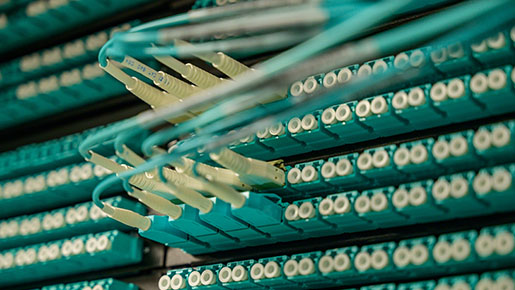In today’s digital age, internet connectivity has become essential for people’s daily lives. To cater to the ever-increasing demand for fast and reliable internet, fiber broadband has emerged as one of the most popular choices. It offers high-speed data transmission, low latency, and minimal data loss. In this article, we will explore the technology behind fiber broadband, how it works, and its advantages over traditional broadband.
The History of Fiber Optic Broadband
Fiber optic technology has been around for several decades, dating back to the 1960s – although it would take many years for scientists to develop the kind of fiber internet in your home. It was initially used for long-distance telephone lines and gradually made its way into the broadband industry. The first commercial fiber optic systems were installed in the late 1970s, and by the 1980s, fiber optic technology had become widely used for telecommunications. However, it wasn’t until the late 1990s to early 2000s that fiber optic broadband emerged as a viable alternative to traditional broadband.
The Fiber Optic Cable
The fiber optic cable is the backbone of fiber broadband technology. It consists of a bundle of thin glass or plastic fibers that transmit data through light signals. The cable’s interior is coated with a material that reflects the light back into the core, preventing signal loss. The fibers are bundled together and encased in protective material to form the cable. Fiber optic cables come in various types, such as single-mode and multi-mode, depending on the distance and bandwidth requirements.
Modulation and Demodulation
Modulation and demodulation are the processes that allow the conversion of data into light signals and back again. The fiber optic cable sends and receives data signals in the form of light waves. These light waves carry digital information in the form of electrical pulses, which are encoded into different light wavelengths or frequencies. The sending device modulates the light signal to encode the digital data onto the light waves, which travel through the fiber optic cable to the receiving device. The receiving device then demodulates the light signal to decode the digital data into its original format.
Advantages of Fiber Broadband
Fiber broadband offers several advantages over traditional broadband. The most significant advantage is its speed. Fiber optic cables can transmit data at incredibly high speeds, up to 10Gbps, depending on the type of cable and network configuration. This makes it possible to download large files, stream high-definition videos, and play online games without any noticeable lag or buffering. Additionally, fiber broadband is more reliable than traditional broadband. Because fiber optic cables are immune to electromagnetic interference, signal loss, and physical damage, fiber broadband networks experience fewer outages and disruptions.
Future of Fiber Broadband
Fiber broadband technology continues to evolve, and it’s expected to become more prevalent in the coming years. The technology’s ability to support high-speed data transmission, low latency, and minimal data loss makes it ideal for emerging technologies such as virtual and augmented reality, smart homes, and the Internet of Things (IoT). As more devices become connected to the internet, the demand for high-speed and reliable broadband will only increase, making fiber broadband an essential technology for the future.

